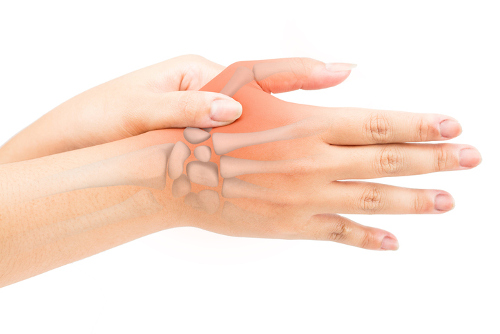Clients with Hand Pain
Hand Pain and Mouse Usage
One of the recent questions we received from a student was regarding hand pain that he encountered in a client while performing an office evaluation.
I have some questions about pain in hands between thumb and first finger on hand that uses the mouse. Is there a reference you would recommend on modifications or anything for pain like this?

We forwarded the question onto Dr. Bob Niklewicz, our Director of Education and you can see his response below:
The space between the thumb and the index finger (I am going to assume it is the right-hand problem for this discussion) has the Adductor Pollicis (AP) and the Opponens (O) muscles in it. The AP has two parts and are in the web-space itself and is probably the muscle you are concerned about. (This area is often called the “Hegu” point). The O muscle is in the meaty part of your palm just below the first thumb joint that can also have pain upon squeezing it. These muscles start and stop in the hand.
The function of these muscles, especially the AP is to bring the thumb towards the palm of the hand. Such as squeezing a pen or a small standard mouse. Generally, you can do those tasks without discomfort. However, overtime and with chronic use of the wrist if it is in an extended posture, pain can develop. This can occur if using a too small mouse that is flat or if a person is using a thumb driven trackball. Much like many muscles that become painful, it is a result of static and prolonged contractions. In essence, it is the overuse and under rested situation that affects the nutrient pathway and the body’s ability to avoid pain.
With that being said, to recover from the pain and probable causes of the problem we have to start by resting the tissue involved. Assuming that there is no other covert pathology that might be present, you have to rest the hand. The fastest and easiest is to use a left-handed mouse with the hand in a natural position.
As the right hand heals, returning to function would involve going to an ergonomically designed mouse that either places the hand into an angle of about 50-70° or as much as 90°. This will greatly reduce the “squeezing/pinching” of a standard mouse and promote the relaxation (or reduced tension) of the AP & O muscles.
Adding a stretching exercise throughout the day via ergo breaks will also help the healing process and reduce an exacerbation of the problem is strongly recommended.
Lastly, it is prudent to note that the web-space pain can also come from a referred pain that originate from the Brachio-radialis muscles that starts at the elbow area. In addition, the AP muscle is often the first muscle to be painful and show atrophy with an injury to the Unlar nerve. That can present with numbness and tingling in the little finger and the ring finger as well as weakness in the AP muscle. If suspected, this is something that should be referred to a physician.
So, there are many possible issues with this area. Go for the low hanging fruit and move the mouse to the left first and monitor progress over several days.
Dr. Bob Niklewicz




While I agree with the above, I can’t help but wonder what the person’s texting habits are…
Exactly! Considering this should be part of the overall assessment and worker education should include their “off work” behaviors with regard to hand and UE use for maximum benefit of any workplace ergonomic changes/adaptations. These days, the work station and worker behaviors “at work” are likely a very incomplete picture, IMHO.
If someone’s handedness is so dominant I have recommended two different mouse types to at least change the hand position without having to change the brain!